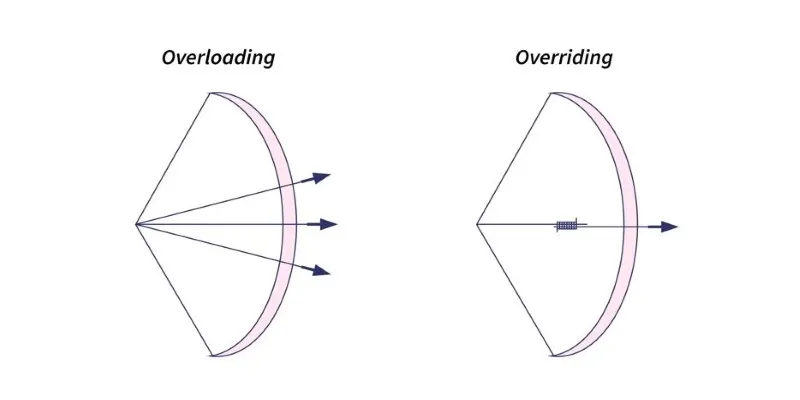In SQL, changing data isn’t just about inserting, updating, or deleting—it’s about keeping those changes safe and reliable. That’s where TCL Commands in SQL come in. These Transaction Control Language commands manage how changes are saved or undone, offering protection when something goes wrong mid- process. Think of them as control switches—either locking in your changes with a COMMIT or backing out safely with a ROLLBACK.
They aren’t flashy, but they’re critical for keeping data consistent and error-free. This article explores what TCL commands are, how they function, and why they’re a must for building dependable, real-world SQL applications.
Understanding TCL: What It Means and Why It Matters
TCL stands for Transaction Control Language, a subset of SQL used to manage transactions—groups of SQL operations treated as a single unit. If one task in the group fails, the entire transaction is rolled back to maintain data integrity. For example, in an online purchase, both payment and product updates must succeed together. If one fails, the system reverts all changes. TCL Commands in SQL ensure transactions are either fully completed or completely undone to prevent inconsistencies.
The database management system uses these commands to confirm changes to data or revert them when needed. Without TCL, every update you make to a database would be final the moment it’s written, which is a recipe for disaster in real-world systems. When you’re dealing with banking systems, booking apps, or even user logins, the need for transactional integrity becomes non-negotiable. And that’s exactly what SQL Transaction Control gives you—a safety net.
The three primary TCL commands you need to know are COMMIT, ROLLBACK, and SAVEPOINT. These aren’t just keywords. They’re crucial tools for protecting data integrity, improving reliability, and giving developers more control over what ends up in the database.
COMMIT and ROLLBACK in SQL: The Final Say in Data Changes
Among the TCL commands in SQL, COMMIT, and ROLLBACK serve as the gatekeepers of data integrity. When you perform operations like inserting, updating, or deleting records, those changes remain temporary until a COMMIT is issued. COMMIT finalizes the transaction, telling the database everything executed as expected and locking in the changes permanently. It’s similar to saving a document—you’re confirming that what’s written should stay.

On the other hand, ROLLBACK is your fail-safe. If something goes wrong midway—maybe a validation fails, a server crashes, or an error is caught—you can revert all changes since the transaction began. It’s the equivalent of an undo function, and it’s particularly useful when dealing with multiple interrelated changes that shouldn’t stand alone.
Both commands rely on the concept of atomicity. In a properly managed transaction, either all operations happen, or none do. Think about a funds transfer between two bank accounts. You deduct money from one and add it to another. If only the withdrawal goes through and the deposit fails, the data becomes inconsistent. COMMIT ensures both actions are complete together; ROLLBACK ensures they don’t partially apply.
In real-world database work, wrapping your modifications inside a transaction and using COMMIT or ROLLBACK isn’t just a safety net—it’s a requirement for maintaining trust in your data.
SAVEPOINT in SQL: Breaking It Down Into Smaller Checkpoints
When dealing with more complex transactions in SQL, sometimes you need more control than just COMMIT or ROLLBACK. That’s where SAVEPOINT comes into play. It allows you to create specific checkpoints within a transaction. If something goes wrong later on, you can roll back only to the most recent savepoint rather than undoing the entire transaction. Think of it as placing a marker—something you can return to if needed without wiping out all your previous work.
For example, imagine you’re updating multiple tables. You finished updating the first table successfully, so you issued a savepoint. As you proceed to the second table, something goes wrong—maybe a constraint fails, or a value violates a rule. Instead of discarding all your updates, you can roll back just to that savepoint. This keeps your successful changes intact and saves you from redoing earlier steps.
SAVEPOINT is especially useful in scripts with multiple steps or when debugging large batch operations. It gives you more granular control over transactions, which can make your processes more efficient and less error- prone.
That said, not every SQL environment treats SAVEPOINT the same. Some systems may limit how deeply savepoints can nest or how many you can use. Still, where supported, it’s a powerful tool for smoothly managing complex SQL operations.
Real-world Scenarios and Best Practices for SQL Transaction Control
TCL commands in SQL are crucial in real-world situations like booking systems or online payments, where multiple operations must succeed together. For example, checking availability, processing payments, and updating records from a single transaction. You use COMMIT only when every step is completed successfully. If any part fails, ROLLBACK undoes all changes, preventing inconsistent or partial data from being stored and ensuring database integrity throughout the process.

A smart practice is integrating transaction control directly within your SQL logic. Relying only on front-end validation is risky, especially in distributed systems. Embedding COMMIT, ROLLBACK, and SAVEPOINT within stored procedures or SQL scripts builds a more secure and self-sufficient backend.
In large data migrations or batch jobs, using SAVEPOINTS lets you roll back to intermediate stages without losing all progress. This prevents complete reprocessing when something small fails.
However, overusing transactions—especially for lightweight or rapid operations—can hurt performance. It’s essential to apply TCL commands judiciously based on the complexity and risk of the operation.
Finally, always document your transaction flow. Clear notes on when and where COMMIT or ROLLBACK occurs make future maintenance easier and prevent accidental data issues in large, evolving systems.
Conclusion
TCL Commands in SQL give you the power to manage data safely and effectively. With COMMIT, ROLLBACK, and SAVEPOINT, you control when changes are saved or reversed, reducing risk and improving reliability. These commands are vital in real-world systems where accuracy matters. Whether handling payments, bookings, or updates, using transaction control ensures your data remains consistent and trustworthy. Mastering these tools is essential for building strong, error-resistant applications that behave the way users expect—without unpleasant surprises.
 zfn9
zfn9






















